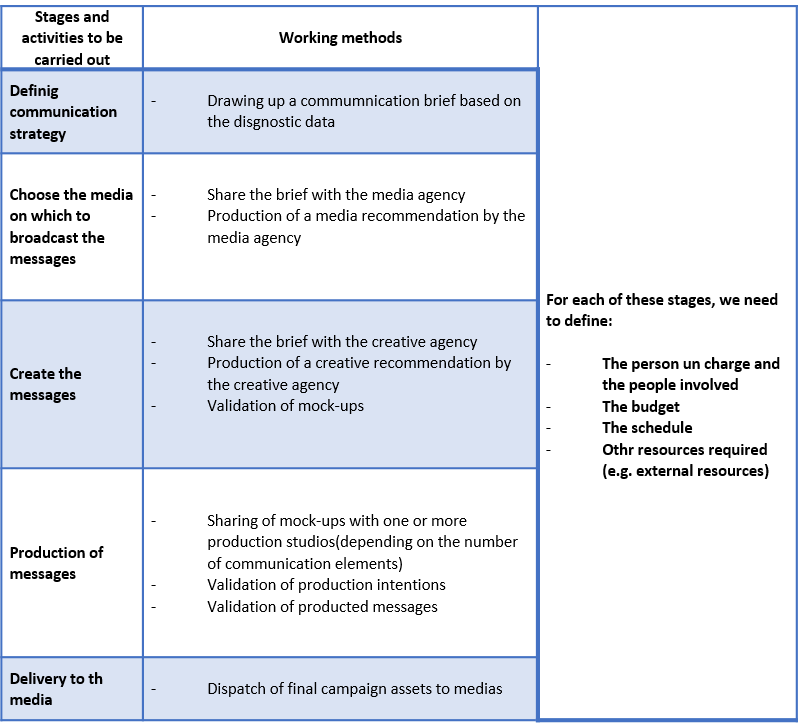Once the intervention to be implemented has been identified and clearly defined (target, objectives, key stages), the third stage consists of moving from the idea to action.
The implementation process differs greatly depending on the type of intervention chosen, since the stages to be considered can be diverse, as can the stakeholders to be involved. For example, an education programme will involve close consultation with education professionals and the administration responsible for education, while a communication campaign will require working with advertising agencies.
However, project management methods are applicable whatever the intervention. It will therefore be necessary to :
- define the various stages and actions to be carried out, including the evaluations to be planned
- identify the stakeholders (internal and external) and allocate roles, tasks and responsibilities
- draw up a budget and stick to it
- set up a retro-planning of the actions to be carried out.
This linear division is theoretical, since in practice each stage interacts with the others and needs to be readjusted as the project progresses.
Please note: The protocol for evaluating the intervention (including the choice of indicators) is defined before it is implemented. Evaluation, which is essential for optimising interventions and their impact, can take place before, during and after the intervention is implemented, depending on the case (pre-testing, monitoring, effectiveness evaluation). To find out more about the evaluation of interventions, please consult the dedicated page.
In the example of a communication campaign, the main activities to be carried out are as follows:
- planning a communication strategy (defining the target and objectives)
- choosing the media (e.g. TV and channels on which to broadcast)
- creating messages (for example, writing the script)
- production of communication materials (e.g. production of the film)
- delivery (e.g. delivery of the film to the advertising agencies)
- broadcasting
- monitoring (e.g. ensuring that the film is properly distributed)


